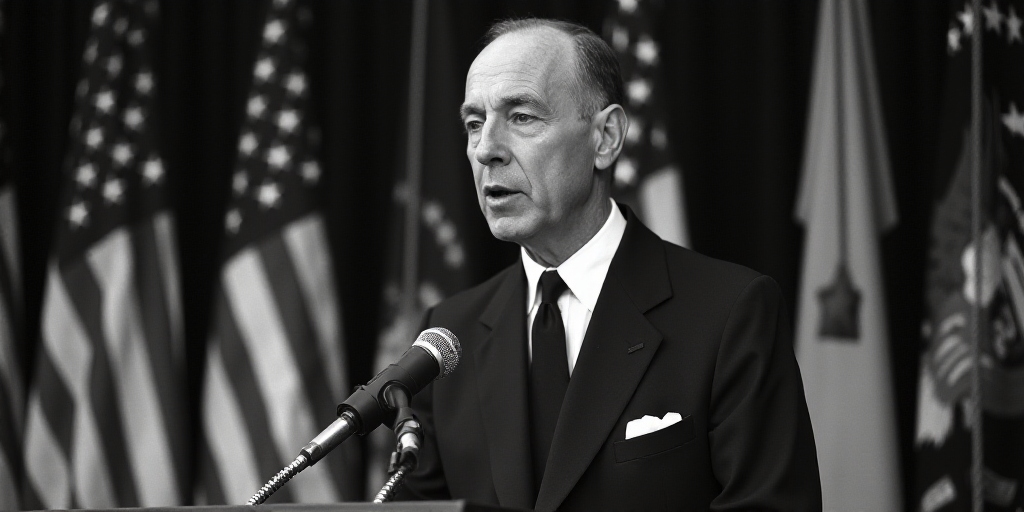Adriana Kugler’s Resignation Gives Trump an Early Seat to Fill
President Joe Biden’s recent appointments to the Federal Reserve Board could potentially counteract Donald Trump’s attempts to reshape monetary policy and the central bank’s operations. The unexpected resignation of Federal Reserve (Fed) Governor Adriana Kugler has given Trump an opportunity to fill a seat months earlier than anticipated.
Trump’s Nomination and the Fed’s Power Dynamics
Trump plans to announce a candidate “soon,” but this move does not guarantee an end to his frustrations with the Fed, which has a deliberate design that limits elected officials’ influence. The President holds significant power, but policy decisions are made by the Federal Open Market Committee (FOMC) and the Board of Governors.
The Fed’s Interest Rate Policy and Trump’s Perspective
After lowering interest rates three times in the last four months of 2024, including two after Trump’s electoral victory, the Fed has kept them stable to observe how increased import tariffs, immigration enforcement, and tax cuts affect its mandate to control inflation and maintain high employment levels.
Trump interprets the pause in rate adjustments as evidence that Powell and his colleagues are acting politically to undermine him. He has pledged to nominate someone who supports lowering the Fed’s reference rate from the current 4.25 – 4.50 percent range to 1.0 percent.
Limited Influence of the Fed Chair
Despite his high standing, the Fed Chair only holds one of seven votes on internal matters in Washington and one of 12 votes from the FOMC regarding crucial issues like staffing, budgets, and overall personnel allocation for an expanding system.
Potential Challenges for Powell’s Successor
A successor to Powell might assume the role with ambitious plans, but they would need support from Biden’s appointees, regional bank directors chosen independently, and possibly Powell himself if he decides to stay as a governor.
Limitations and Market Influence
Powell, who frequently emphasizes the importance of preserving the Fed’s independence, has not yet disclosed his plans. Traditionally, Fed chairs do not remain as governors.
During the remainder of Trump’s presidency, potential targets for courting by Powell’s successor include Vice Chair Philip Jefferson, Governors Lisa Cook and Michael Barr—all appointed by Biden. If none resign, each will serve until 2032 or later.
Should Powell stay, his votes combined with his own would form a majority in the board, capable of influencing managerial and regulatory decisions.
Regarding interest rates, set by governors along with five regional bank presidents as part of the FOMC, they could still exert significant influence independently of Powell’s departure in May.
With their confirmed seats, there is no assurance that Waller or Supervision Vice Chair Michelle Bowman, both appointed by Trump, would agree with radical reform. Waller, in particular, has already rejected some ideas proposed by individuals like Warsh to drastically reduce the Fed’s balance sheet.
“Making sweeping changes would be very difficult. There are limits to what a new president could achieve,” said Bill English, former director of the Fed’s monetary affairs division and current Yale School of Management professor.
Key Questions and Answers
- What is the significance of Adriana Kugler’s resignation? It gives Donald Trump an early opportunity to fill a Federal Reserve Board seat.
- How might Biden’s appointments affect Trump’s plans for the Fed? They could form a majority with Powell, allowing them to influence managerial and regulatory decisions.
- What are the limitations of the Fed Chair’s influence? The Chair holds only one vote on internal matters and one of 12 votes on crucial issues via the FOMC.
- What challenges could Powell’s successor face? They might need support from Biden’s appointees, independent regional bank directors, and possibly Powell himself to implement significant changes.
- How could the Fed’s interest rate policy be affected by these changes? Despite potential shifts, the Fed’s interest rate decisions remain influential and could stay stable due to ongoing policy observations.






